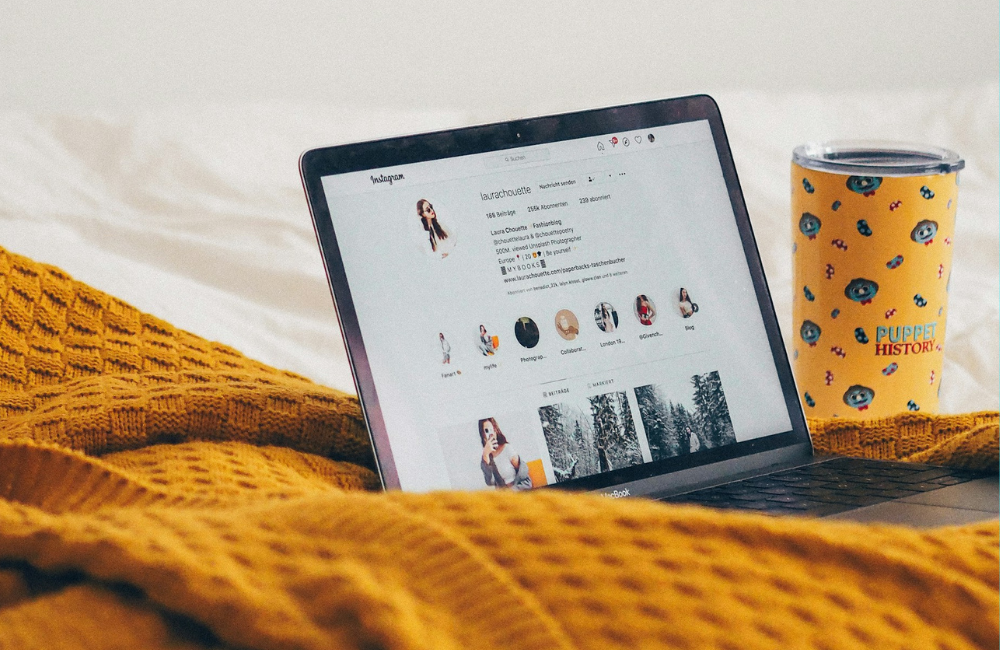
5 Themes We Expect to See Across Social Media in 2024 (ft. Expert Contributions)
This article explores five themes for social media in 2024 through the lens of industry experts, unraveling their predictions and the reasons behind them.
Content Writer @ Buffer
“This year is going to be transformative!”
As humans, we tend to say (and believe) this statement about every year. And it’s true – we don’t stay stagnant, and neither do the industries in which we work. But something about 2024 makes me think it stands poised to redefine the social media landscape and the creator economy.
As we dive into this new era fueled by changing consumer behavior, the influence of AI, and the shifting of how platforms function, certain key trends emerge, painting a picture of a different digital world.
However, I’m not a trend forecaster or follower by any means (I’ve been wearing the same dad sneakers for the past two years). So, I can’t really speak to what might be, based on data, the new reality of this year. Instead, I can provide certain themes and insights based on research, expert opinions, and raw instinct for what we might see.
So, in this article, join me in exploring five themes for social media in 2024 through the lens of industry experts, unraveling their predictions and the reasons behind them.
A new frontier for influencers and brands on LinkedIn
LinkedIn hasn’t been the place to go “just to get a job” in a long time. The line between professional networking and creative expression blurs daily as more new creators emerge on the platform.
Considering the platform’s shift from “creators” to “professionals who create,” as shown in a post from their VP of Editorial, Daniel Roth, they want to make it so that anyone truly can become a creator on LinkedIn.
What else is corroborating this prediction? First is the increased focus on tools to enable sponsored content and improved analytics for tracking its performance.
Lindsey Gamble, who writes a newsletter about social media and the creator economy, predicts that 2024 will be the year of influencer marketing on LinkedIn. He says, “With new and emerging to established creators building up audiences on LinkedIn, thanks to its strong organic reach, this year, we will see more brands looking to capitalize on this and tap into this pool of talent for influencer marketing campaigns, especially companies wanting to get in front of B2B audiences.”
As a LinkedIn creator (who’s been bestowed a “Top Voice” badge), Lindsey has experienced and witnessed its trajectory as a platform for creators. He shared that he’s started to work with brands on sponsored content on LinkedIn and had more inquiries from companies interested in partnering with him on sponsored posts and newsletters.
LinkedIn is rolling out features and tools that help aid in creator-brand partnerships, such as a Brand Partnership Label for disclosing their type of content and stronger analytics for creators, which not only help them understand how their content performs but also provide the ability to easily export those analytics and share them with marketers, whether it's for pitching or reporting on sponsored content.
Lindsey predicts that we may even see LinkedIn play more of a direct role in facilitating creator-brand collaborations with a light version of a creator marketplace. In addition, there is also a heightened increase in interest from B2B companies (including direct conversations I’m having with brands) wanting to partner with creators, particularly on LinkedIn, where their audiences primarily reside.
Similarly, Lia Haberman, who writes the ICYMI newsletter, which chronicles the latest in marketing, shared a LinkedIn-focused prediction, except with a focus on brands.
“Everyone's talking about how creators will thrive on LinkedIn, but we're also seeing brands use the platform in new ways with more personal and humorous updates than we've come to expect from LinkedIn,” predicts Lia.
She shared three key factors contributing to this shift –
- Social media managers increasingly need an alternative to X (Twitter). Lia says, “If your organization already has a LinkedIn page, it can seem like a natural destination for your brand's short text updates and memes.”
- Next is younger Gen Z social media managers posting to LinkedIn, which brings a new energy to the platform. The Gen Z audience, the fastest-growing demographic on the platform according to LinkedIn, is more comfortable with blending personal and professional tones than previous generations.
- Finally, Lia points out personal pages have better reach than company pages. She shares that in 2024, attention will be focused on the brands that bring a personal touch to their page updates. So, whether that's increasing executive leadership updates, employee advocacy programs, or social media managers posting on company pages in the first person, that personalized touch will shift LinkedIn's tone in a way we haven't seen before.
Lia’s prediction is bolstered by her research on LinkedIn for a client and seeing examples of what corporate accounts such as Lyft, Robert Half, SEMRush, Vista Social, and Hubspot are doing on the platform.
So, what does all this mean for LinkedIn in 2024? It will finetune its position as the place where professional meets personal, where influencers aren't just faces but voices of credibility, and where brands don't just talk at their audience but connect.
How will you be incorporating LinkedIn into your social media strategy in 2024? Tell us in the comments!
The era of authenticity and personalization
The demand for authenticity and personalized connections reshapes content creation, focusing on genuine interactions and niche communities.
Reflecting on the increasing need for human connection, Annie-Mai Hodge, founder of Girl Power Marketing, predicts a rise in authentic, long-form content on short video platforms – specifically TikTok.
Recently, platforms have been dominated by short-form content centered around trending audio. However, in 2024, Annie-Mai predicts there will be a noticeable shift towards more original and longer video content. This is evident in how TikTok and Instagram encourage users to create videos that exceed the typical 15- or 30-second length. The challenge for creators lies in incorporating long-form content without completely abandoning trends.
The increasing demand for long-form content is a response to evolving consumer preferences and an outcome of broader societal changes, such as remote work and the influencer of AI, which have heightened the need for human connection.
In line with the shift towards more authentic content, Debbie Moran, a marketing manager at RecurPost, emphasizes that we’ll see a shift towards even more personalized and niche content.
Users actively seek content that aligns with their interests and fosters genuine connections, signaling a desire for a more personalized online experience. This increasing demand for authenticity in content creation is a key driver, with users gravitating towards creators who share genuine experiences and perspectives.
They don’t need to be massive either – the shift towards micro-influencers will continue as users trust creators with smaller followings for a more personalized touch.
Creators move beyond content creation
To survive challenges like shifting algorithms or economic downturns, creators are diversifying their roles, influencing various business aspects beyond traditional social media content creation.
In 2024, we’ll see more creators venturing into entrepreneurship, entertainment, or corporate roles. This ties into the growing need for sustainable career models among creators and the evolution of their ambitions.
Lia Haberman predicts that creators will start to look at what comes next and be more intentional about the path they're pursuing. “After all, there are people who have been doing this now for over a decade, and while brand deals are the number one source of revenue for creators, it's not a sustainable business model, and it's certainly not the blueprint for success used by the top tier creators,” shares Lia.
@lamideelizabeth Financial literacy for creators and creatives is super important - diversify and multiple your income streams into offline business when you can #creatoreconomy #creatoreconomynews #personalfinance #financialliteracy #influencer #money #creatoreconomy #careerpivot
♬ original sound - Lámidé | Building Wealth
So what can creators look to instead? Lia points out that when creators “graduate” from sponsored content and brand partnerships, they usually take one of three routes:
- they launch their own businesses and become entrepreneurs;
- they attempt to make the move into traditional entertainment, starring in streaming, TV, and movies;
- or they take the marketing and brand-building skills they've learned and go in-house, working for corporate.
Jason Boyd, Director of Evolve SEO Agency, corroborates this idea by observing creators' involvement in product development and marketing strategies becoming a reality. Creators are increasingly recognized for their unique insights and ability to build trust with audiences, making them valuable assets in various business processes.
We don’t have to look far for top creator money-making strategies. Emma Chamberlain launched a coffee brand, and former influencer Lee from America dropped out of "influencing" to become a marketer and now hosts workshops to encourage other people to think about life beyond social media. Madison Collinge, a creator who took a similar path, was a full-time influencer for 2 years before announcing a return to a 9 to 5 to balance both careers.
@maddison__lynn Replying to @abcgail if you stayed for this entire video congrats & thank you! Lmk your thoughts on influencers. Im down to hear it all
♬ original sound - Maddison lynn
As transparency increases around the business of being a creator, aspiring and emerging creators will start to look at social media fame and fortune as just a temporary stop along the route to greater career goals.
The rise of private, niche communities
A significant shift towards private communities and niche markets is underway, highlighting the need for more focused and tailored audience engagement.
Rachel Karten, who writes the Link in Bio newsletter, observes a shift towards private communities as a response to the unpredictability of social algorithms and the desire for deeper connections.
There's a growing preference for smaller, specialized, trusted groups in community building. Research from Thinkific’s 2023 Digital Learning Trends report highlights the value of communities, showing that nearly 50 percent of online community members are actively engaged, more than ten times the engagement rates seen on traditional social media.
These private, niche communities offer a sense of belonging and a safe space for genuine interactions, free from the toxicity and polarization often found on larger social media platforms.
Brands and media organizations increasingly recognize the value of engaging with their audiences across digital and physical community spaces, not just their owned platforms. This approach allows for richer storytelling, a better understanding of audience pain points, and reaching more people.
Rachel’s prediction is corroborated by Adrien Lemaire, a freelance content & PR manager, who has spotted that B2B companies increasingly adopt Community-Based Marketing (CBM). The decline in organic reach on public channels and the rise of "dark social" channels are key drivers of this trend. B2B brands are creating spaces for members to discuss shared interests, often independently of direct brand involvement, which is crucial for building trust and adding value for their audience.
With the introduction of WhatsApp communities and Instagram broadcast channels, Meta is also facilitating brands in leveraging this trend. Think Matt Navarra’s (super valuable) Geekout PRO WhatsApp community that’s a companion to his popular newsletter. Depending on the target audience and objectives, several other platforms can also be used: Discord, Slack, Telegram, LinkedIn or Facebook groups, and in-app communities.
There’s also a move towards smaller, DIY, and stacked tech tools like Skool and Circle as community owners seek to create customized, affordable community experiences. This shift in community technology reflects the growing complexity of managing online communities and the need for more specialized tools.
The rise of communities not attached to a major platform is noteworthy, as conversations seamlessly move across different platforms through media like screenshots and recordings, reflecting a more integrated digital experience.
It’s a good signal for the rise of the Fediverse, the term for an ensemble of social networks that can communicate with each other while remaining independent. With platforms like Bluesky and even Meta’s Threads looking to incorporate the Fediverse and decentralize their social networks, 2024 will be the year of the community.
Long-form video cements YouTube’s No.1 spot
Content creation has always ebbed and flowed as different formats are popular at different times. In 2024, the trajectory of content creation will see a substantial shift, especially with platforms like YouTube continually solidifying their status as industry leaders.
Specifically, Brett Dashevsky, founder and organizer of Creator Economy NYC, has observed creators leaning into low-production, long-form content on YouTube.
He notes the transition of short-form creators, like Timm Chiusano, towards more lightly produced long-form videos. For this shift to be happening among creators signifies that YouTube offers more value to both its creators and its audience.
Sierra Reed, VP Director, Connections & Social Strategy at Digitas North America, shared a similar insight but highlighted a different reason. She shared a growing trend where users, frustrated with the commercial saturation on TikTok, are gravitating towards YouTube.
This movement underscores YouTube's ability to offer diverse content formats, from YouTube Shorts to community posts littered with memes to the long-form videos we know and love. As TikTok looks to incorporate more overt advertising through TikTok Shop, YouTube emerges as a more versatile and user-friendly platform, offering a refuge for those seeking authentic, ad-free entertainment.
YouTube is not just a passive content consumption platform; it's interactive, allowing creators to involve their audience in content creation through polls, surveys, and live streams. This strategy builds stronger connections with their audience. It doesn’t hurt that longer-form content goes a long way, as you can repurpose it for short-form platforms.
In 2024, YouTube's position as a powerhouse in the creator economy is more pronounced than ever. Between long-form content and a shift in user preferences towards valuable content, it’s in the running to be at the forefront of the digital content landscape.
Use the 2024 social media predictions to inform your strategy
As we look towards 2024, it's clear that social media and the creator economy are set for significant evolution. From LinkedIn's emergence as a powerhouse for both influencers and brands to the growing importance of authenticity and personalization in content, the landscape is shifting.
Creators are expanding their horizons beyond content creation while brands and businesses increasingly focus on private communities and niche markets. These trends reflect the changing dynamics of digital interaction and signal new opportunities and challenges for everyone involved in the digital economy.
Try Buffer for free
140,000+ small businesses like yours use Buffer to build their brand on social media every month
Get started nowRelated Articles

TikTok's parent company must divest the app or face a ban in the U.S. Here's everything we know, plus how to plan ahead.

Whether you’re a full-time content creator, micro-influencer, nano-influencer, or just getting started, here’s how to create your own influencer media kit.

In this article, get answers to questions about social media for solopreneurs.